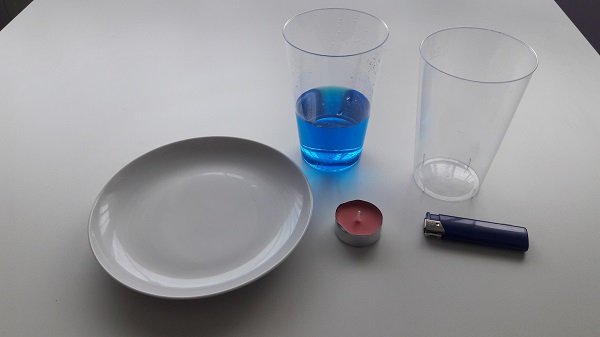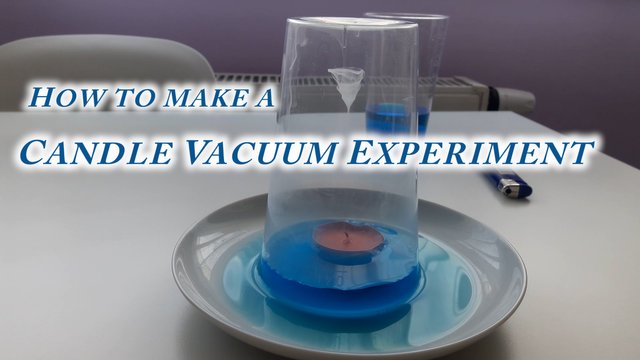Candle in the vacuum experiment
Today we will play with the fire - but won’t get burned (hopefully!). Let’s explore what happens when we put a glass over a burning candle that is surrounded by some water. It looks like magic, but as always it’s only science!
SCIENCE BEHIND CANDLE IN THE VACUUM EXPERIMENT
Let’s talk about the candles. Why does a candle burn? Well, you know that it won’t start burning by itself - we must supply some energy. And that’s precisely what we do when we use lighter or matches to lit the candle up. The chemical reaction that occurs is called combustion. Vax from the candle reacts with an oxygen to produce energy - heat, and light.As a product of that reaction, carbon dioxide forms as well as some steam and of course smoke. Smoke is actually a bunch of small carbon particles that didn’t burn in the process, mixed with the steam.
Okay, so we learned that to sustain fire we need oxygen. When we cover our candle with the glass we are cutting off the oxygen supply. When the air in the glass is depleted of oxygen - lights out!But why did the water rise? Heat from the candle made the air inside the candle quite hot and hot air expands to take more space. When the flame is out, the air starts to cool and that means it’s shrinking again. That produces a partial vacuum - the area of low pressure. The pressure outside of the glass (atmospheric pressure) is now higher than that in the glass. So water inside the glass quickly rises to make up the difference. Equilibrium!
MATERIALS:

- Lighter
- Candle
- Water (with some food coloring for the better effect)
- Plate
- Glass
INSTRUCTIONS FOR CANDLE IN THE VACUUM EXPERIMENT:
For step-by-step instructions on how to conduct this experiment watch the video at the beginning of the article or continue reading...
- Put the candle in the middle of the plate and lit it
- Pour the colored water (around 2 dl) on the plate so it surrounds the candle
- Cover the candle with the glass
- Watch carefully!
WHAT WILL YOU DEVELOP AND LEARN:
- Chemistry principles
- What are the atmospheric pressure and partial vacuum
- How to use the scientific method
If you liked this experiment and want even more cool stuff to do, we recommend making a lava lamp or growing your own sugar crystals.
Original article taken from the https://www.stemlittleexplorers.com/en/candle-in-the-vacuum-experiment/

These little experiments are great to get kids interested in science.
Yes, thanks! That is our goal, to create interest for STEM from early age and show how STEM fields can be interesting 😀